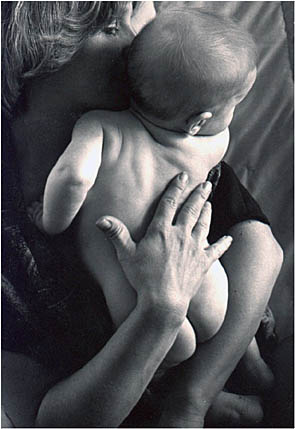The first and most important point is to begin this journey with great hope and confidence. God is never outdone in generosity. So, if we make even a small change in our weekly pattern, that is a tremendous opening for God to work in us. One way to affirm this hope and confidence is to express it for just a brief instant, each morning, at the same time each day—as you’re finding your slippers, or as you’re brushing your teeth, or while pouring that first cup of coffee—”I know you are with me today, Lord.”
Each of us will have a different amount of time we will be able to give to this retreat each week. We recommend that if your time is limited, just read the guide. On another day that week, you may find you have time to return to reflect on another resource.
This week’s guide offers us the opportunity to review our life stories through the photo album of our lives. Throughout these weeks, we’ll make use of the practice, habit, exercise of letting a reflection or image be part of the background of our day. All of us are aware, from time to time, of stuff that occupies the background of our consciousness. The song that plays in our head is a common example.
This retreat invites us to practice taking advantage of this facility of our brain. Rather than have that space filled at random with stuff that just comes and goes, we will focus it more consciously. While doing all the ordinary tasks we do in our everyday lives, we will be using that background space to give a distinctive tone to our week. This won’t be a distraction to our work or take any extra time away from our work, but it will eventually make a difference in how we experience our work. It just takes practice.
Concretely, for this week, we all know the outline of our story. This isn’t new material. What is new is that you will consciously be aware that you are reviewing your life story this week. You can plan it fairly deliberately—as an example: Monday and Tuesday, you could remember the images of your childhood; Wednesday and Thursday, your teens and early adulthood; Friday and Saturday, the rest of your adult life. So, throughout Wednesday—as you’re finding your slippers, driving to work, walking to your first meeting, walking to the restroom, looking at that image on your monitor, walking to the parking lot, getting supper ready, sharing a memory with a family member, or undressing before going to bed—during all those brief everyday times, have in the background the formative images that shape your story during your teen years.
It’s about feelings. Each picture in your life story has feeling attached to it. For example, I might look long and hard at that image of myself on the playground in fifth grade. Feelings come to the surface if I let them—or, the picture of myself in that relationship in my early twenties. We know there are feelings there. Powerful feelings are associated with the birth of a child, the death of a loved one, the change of jobs, terrible family crises, images that come to mind throughout your marriage, battles with people you’ve struggled with. Those feelings will help us see and experience how these pictures tell our stories, who we are today.
It’s about God’s fidelity. This isn’t a sentimental journey. With every picture in your story, there is a grace offered to you as you look for God’s presence there. If, throughout this week, you can imagine God’s having been present there with you—even when you didn’t notice or feel it at the time—that would be a tremendous grace unifying your life.
It’s about gratitude. With every memory, every image and feeling, practice saying, “Thank you.” Even the painful memories. Even if you were not grateful then. Even if it involved some bad stuff you did to yourself or to others. The Lord was there, loving you. Let gratitude now touch and span throughout the story of your life.
It’s about a journey. This is only the beginning. We have thirty-four weeks. We will move slowly. And all we need to do is give God just a little space to transform our everyday lives, a moment at a time.
 Did you ever get a song in your head and realize that it was there for a long time, no matter what you were doing? This is like that. Throughout our day, each day this week, we will have in mind the memories that have shaped us.
Did you ever get a song in your head and realize that it was there for a long time, no matter what you were doing? This is like that. Throughout our day, each day this week, we will have in mind the memories that have shaped us.
